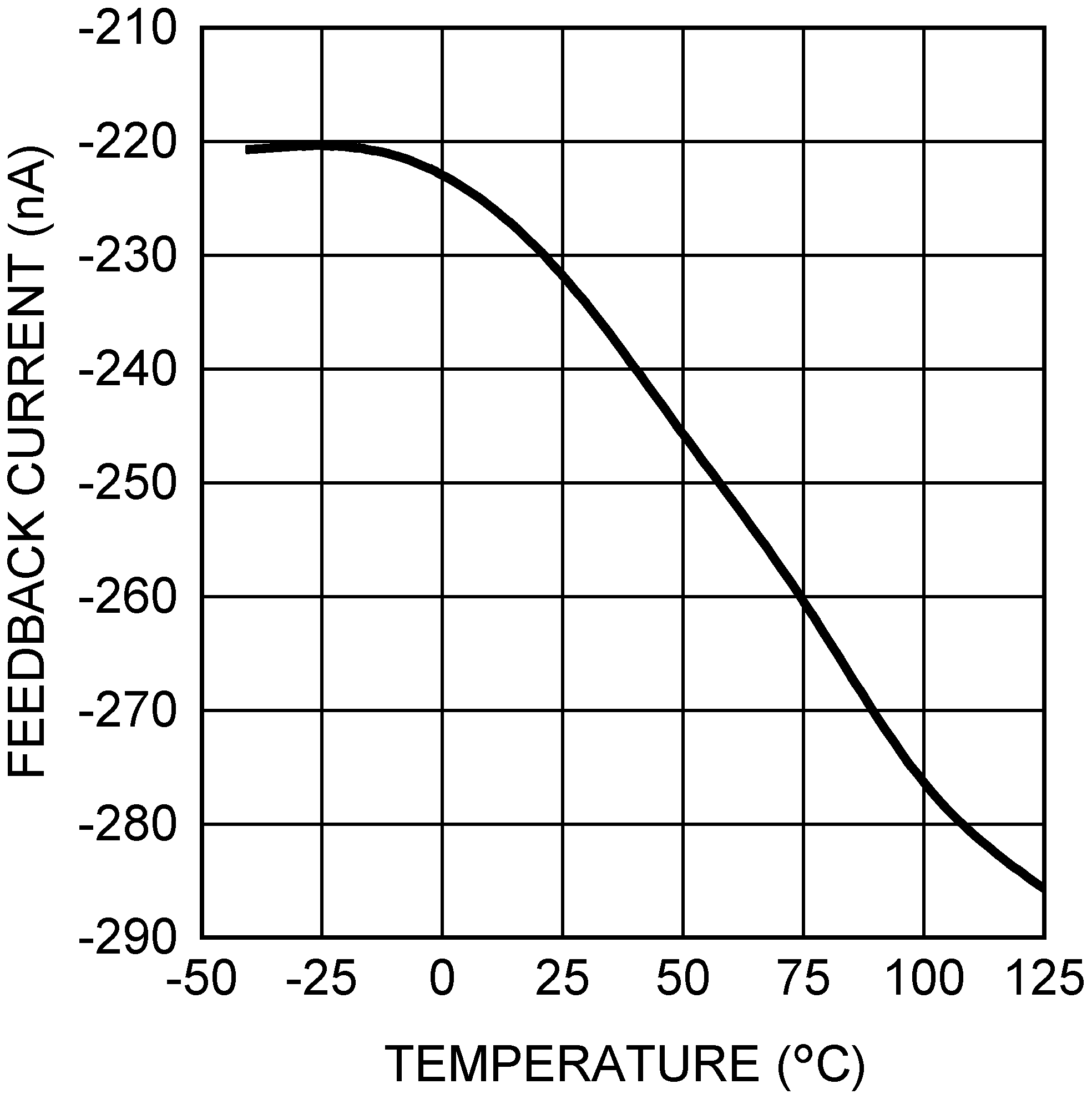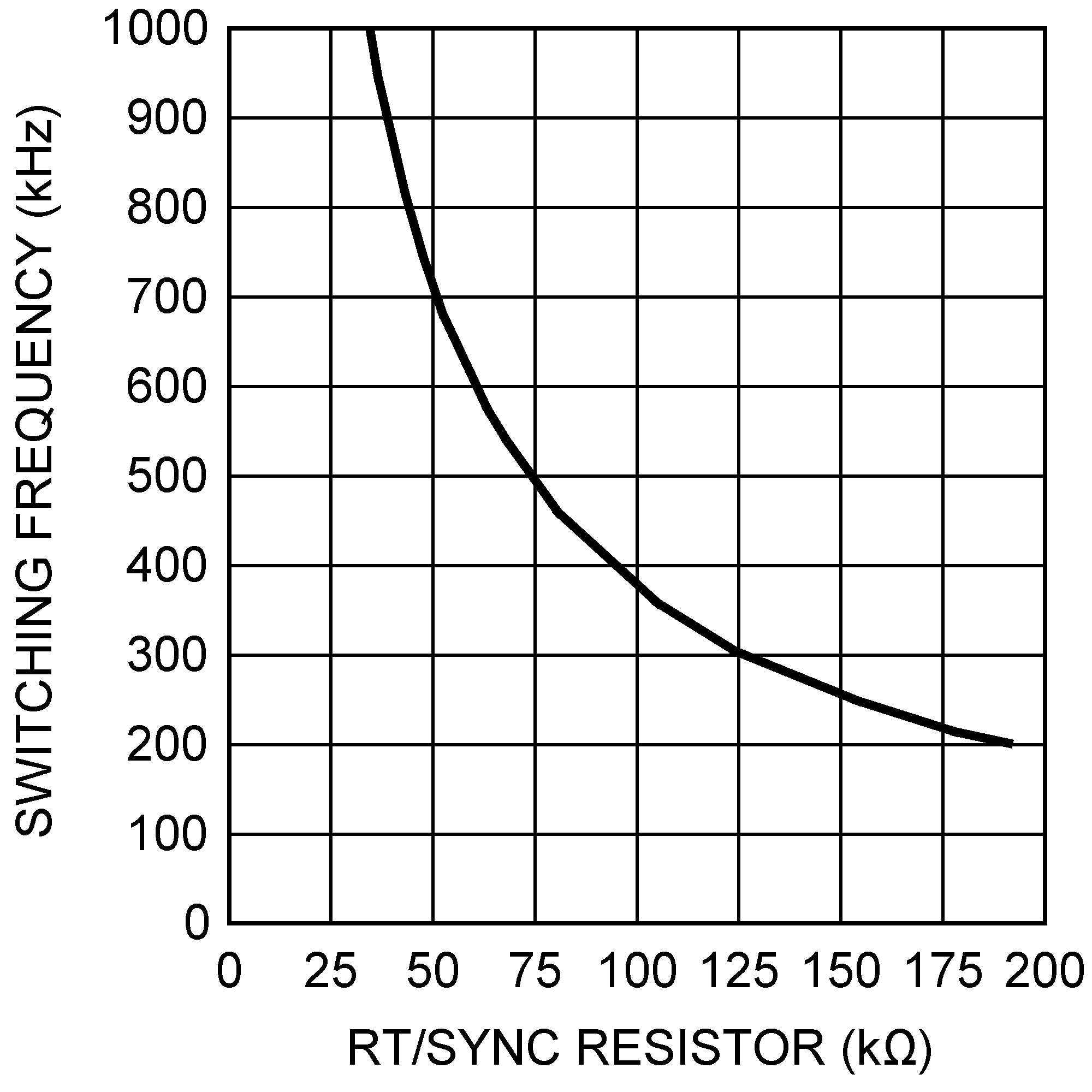SNVS588M September 2008 – November 2014 LM22672 , LM22672-Q1
PRODUCTION DATA.
- 1 Features
- 2 Applications
- 3 Description
- 4 Revision History
- 5 Pin Configuration and Functions
- 6 Specifications
- 7 Detailed Description
- 8 Application and Implementation
- 9 Power Supply Recommendations
- 10Layout
- 11Device and Documentation Support
- 12Mechanical, Packaging, and Orderable Information
Package Options
Mechanical Data (Package|Pins)
- DDA|8
Thermal pad, mechanical data (Package|Pins)
Orderable Information
6 Specifications
6.1 Absolute Maximum Ratings(1)(2)
over operating free-air temperature range (unless otherwise noted)| MIN | MAX | UNIT | ||
|---|---|---|---|---|
| VIN to GND | 43 | V | ||
| EN Pin Voltage | –0.5 | 6 | V | |
| SS, RT/SYNC Pin Voltage | –0.5 | 7 | V | |
| SW to GND(3) | –5 | VIN | V | |
| BOOT Pin Voltage | VSW + 7 | V | ||
| FB Pin Voltage | –0.5 | 7 | V | |
| Power Dissipation | Internally Limited | |||
| Junction Temperature | 150 | °C | ||
| For soldering specifications, refer to Application Report Absolute Maximum Ratings for Soldering (SNOA549). | ||||
6.2 Handling Ratings: LM22672
| MIN | MAX | UNIT | |||
|---|---|---|---|---|---|
| Tstg | Storage temperature range | –65 | 150 | °C | |
| V(ESD) | Electrostatic discharge | Human body model (HBM), per ANSI/ESDA/JEDEC JS-001, all pins(1) | –2 | 2 | kV |
(1) JEDEC document JEP155 states that 500-V HBM allows safe manufacturing with a standard ESD control process.
6.3 Handling Ratings: LM22672-Q1
| MIN | MAX | UNIT | ||||
|---|---|---|---|---|---|---|
| Tstg | Storage temperature range | –65 | 150 | °C | ||
| V(ESD) | Electrostatic discharge | Human body model (HBM), per AEC Q100-002(1) | –2 | 2 | kV | |
(1) AEC Q100-002 indicates HBM stressing is done in accordance with the ANSI/ESDA/JEDEC JS-001 specification.
6.4 Recommended Operating Conditions
| MIN | MAX | UNIT | ||
|---|---|---|---|---|
| VIN | Supply Voltage | 4.5 | 42 | V |
| Junction Temperature Range | –40 | 125 | °C | |
6.5 Thermal Information
| THERMAL METRIC(1) | LM22672, LM22672-Q1 | UNIT | |||
|---|---|---|---|---|---|
| HSOP | |||||
| 8 PINS | |||||
| RθJA | Junction-to-ambient thermal resistance | MR Package, Junction to ambient thermal resistance(2) | 60 | °C/W | |
(1) For more information about traditional and new thermal metrics, see the IC Package Thermal Metrics application report (SPRA953).
(2) The value of RθJA for the SO PowerPAD exposed pad (MR) package of 60°C/W is valid if package is mounted to 1 square inch of copper. The RθJA value can range from 42 to 115°C/W depending on the amount of PCB copper dedicated to heat transfer.
6.6 Electrical Characteristics
Typical values represent the most likely parametric norm at TA = TJ = 25°C, and are provided for reference purposes only. Unless otherwise specified: VIN = 12 V.| PARAMETER | TEST CONDITIONS | MIN(5) | TYP(4) | MAX(5) | UNIT | |
|---|---|---|---|---|---|---|
| LM22672-5.0 | ||||||
| VFB | Feedback Voltage | VIN = 8 V to 42 V | 4.925 | 5.0 | 5.075 | V |
| VIN = 8 V to 42 V, –40°C ≤ TJ ≤ 125°C | 4.9 | 5.1 | ||||
| LM22672-ADJ | ||||||
| VFB | Feedback Voltage | VIN = 4.7 V to 42 V | 1.266 | 1.285 | 1.304 | V |
| VIN = 4.7 V to 42 V, –40°C ≤ TJ ≤ 125°C | 1.259 | 1.311 | ||||
| ALL OUTPUT VOLTAGE VERSIONS | ||||||
| IQ | Quiescent Current | VFB = 5 V | 3.4 | mA | ||
| VFB = 5 V, –40°C ≤ TJ ≤ 125°C | 6 | |||||
| ISTDBY | Standby Quiescent Current | EN Pin = 0 V | 25 | 40 | µA | |
| ICL | Current Limit | 1.3 | 1.5 | 1.7 | A | |
| –40°C ≤ TJ ≤ 125°C | 1.2 | 1.8 | ||||
| IL | Output Leakage Current | VIN = 42 V, EN Pin = 0 V, VSW = 0 V | 0.2 | 2 | µA | |
| VSW = –1 V | 0.1 | 3 | µA | |||
| RDS(ON) | Switch On-Resistance | 0.2 | 0.24 | Ω | ||
| –40°C ≤ TJ ≤ 125°C | 0.32 | |||||
| Fsw | Oscillator Frequency | 500 | kHz | |||
| –40°C ≤ TJ ≤ 125°C | 400 | 600 | ||||
| TOFF | Minimum Off-time | 200 | ns | |||
| –40°C ≤ TJ ≤ 125°C | 100 | 300 | ||||
| TON | Minimum On-time | 100 | ns | |||
| IBIAS | Feedback Bias Current | VFB = 1.3 V (ADJ Version Only) | 230 | nA | ||
| VEN | Enable Threshold Voltage | Falling | 1.6 | V | ||
| Falling, –40°C ≤ TJ ≤ 125°C | 1.3 | 1.9 | ||||
| VENHYST | Enable Voltage Hysteresis | 0.6 | V | |||
| IEN | Enable Input Current | EN Input = 0 V | 6 | µA | ||
| FSYNC | Maximum Synchronization Frequency | VSYNC = 3.5 V, 50% duty-cycle | 1 | MHz | ||
| VSYNC | Synchronization Threshold Voltage | 1.75 | V | |||
| ISS | Soft-Start Current | 50 | µA | |||
| –40°C ≤ TJ ≤ 125°C | 30 | 70 | ||||
| TSD | Thermal Shutdown Threshold | 150 | °C | |||
(1) Absolute Maximum Ratings indicate limits beyond which damage to the device may occur, including inoperability and degradation of device reliability and/or performance. Functional operation of the device and/or non-degradation at the Absolute Maximum Ratings or other conditions beyond those indicated in the Recommended Operating Conditions is not implied. Recommended Operating Conditions indicate conditions at which the device is functional and should not be operated beyond such conditions. For ensured specifications and conditions, see the Electrical Characteristics table.
(2) If Military/Aerospace specified devices are required, please contact the Texas Instruments Sales Office/Distributors for availability and specifications.
(3) The absolute maximum specification of the ‘SW to GND’ applies to dc voltage. An extended negative voltage limit of –10 V applies to a pulse of up to 50 ns.
(4) Typical values represent most likely parametric norms at the conditions specified and are not ensured.
(5) MIN and MAX limits are 100% production tested at 25°C. Limits over the operating temperature range are ensured through correlation using Statistical Quality Control (SQC) methods. Limits are used to calculate Average Outgoing Quality Level (AOQL).
6.7 Typical Characteristics
Vin = 12 V, TJ = 25°C (unless otherwise specified) Figure 1. Efficiency vs IOUT and VIN, VOUT = 3.3 V
Figure 1. Efficiency vs IOUT and VIN, VOUT = 3.3 V
 Figure 3. Current Limit vs Temperature
Figure 3. Current Limit vs Temperature
 Figure 5. Feedback Bias Current vs Temperature
Figure 5. Feedback Bias Current vs Temperature
 Figure 7. Standby Quiescent Current vs Input Voltage
Figure 7. Standby Quiescent Current vs Input Voltage
 Figure 9. Normalized Feedback Voltage vs Input Voltage
Figure 9. Normalized Feedback Voltage vs Input Voltage
 Figure 11. Soft-Start Current vs Temperature
Figure 11. Soft-Start Current vs Temperature
 Figure 2. Normalized Switching Frequency vs Temperature
Figure 2. Normalized Switching Frequency vs Temperature
 Figure 4. Normalized RDS(ON) vs Temperature
Figure 4. Normalized RDS(ON) vs Temperature
 Figure 6. Normalized Enable Threshold Voltage vs Temperature
Figure 6. Normalized Enable Threshold Voltage vs Temperature
 Figure 8. Normalized Feedback Voltage vs Temperature
Figure 8. Normalized Feedback Voltage vs Temperature
 Figure 10. Switching Frequency vs RT/SYNC Resistor
Figure 10. Switching Frequency vs RT/SYNC Resistor